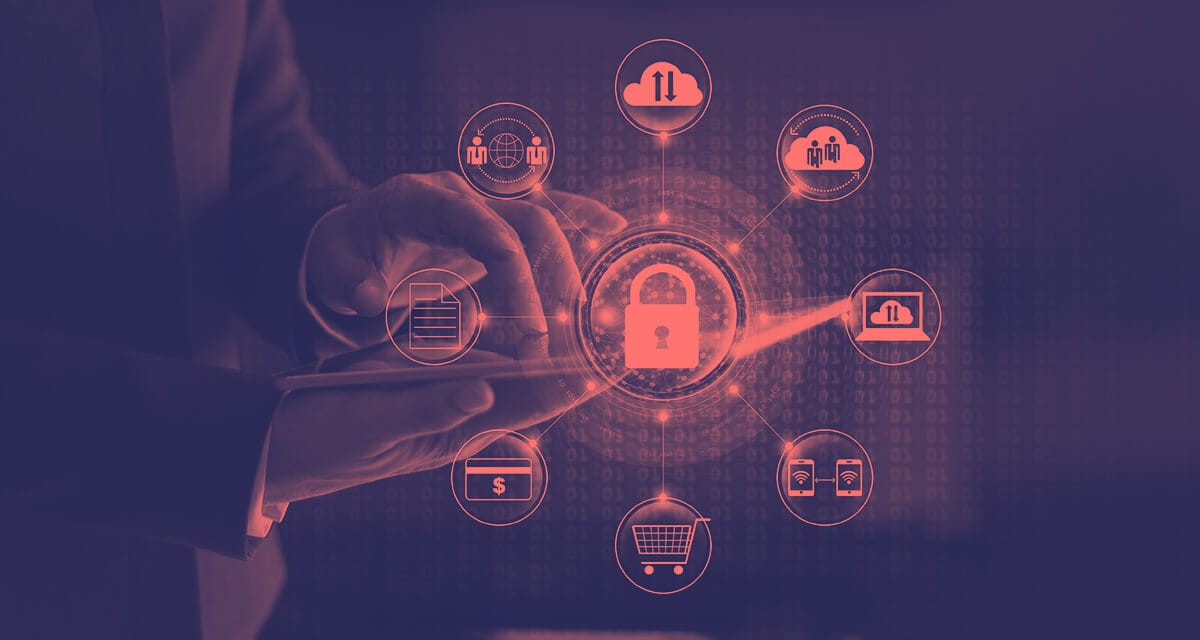How Can SIEM Protect Your Organization from Cyber Threats

The heavy reliance on IT infrastructure has its positives and negatives for organizations — with the negatives being the numerous cyber attacks targeted against them. Furthermore, it is now an open secret that combining firewalls and anti-virus software is a Stone Age-esque method of preventing cyber threats. Hence, many organizations seek more sophisticated solutions for protection, such as security information and event management (SIEM).
Still, not many of them understand how these SIEM solutions can provide an advanced security system for their digital operations. Hence, we have created a guide to provide the necessary insights into how SIEMs can protect your organization, company, or business from cyber threats.
Understanding the SIEM (Security Information and Event Management)?
SIEM is a security approach that many organizations employ to ensure a proper and sophisticated security protocol or framework. To know what are the key benefits of SIEM, it would be vital to point out the sub-technologies that are about the existence of SIEM. Apparently, two major technologies come together to form the existence of SIEM: Security event management (SEM) and Security information management (SIM).
As the name of the two technologies implies, security event management (SEM) is mainly about monitoring and notifying the security operation center (SOC) of an organization of any suspicious activity. For instance, when there are too many login attempts to an account, one of the functions of SEM is to report such events. On the other hand, one of the major functions of security information management is to provide information concerning data logs.
How Does SOC Work TO Benefit an Organization?
The average SIEM deploys certain basic steps to ensure any organization’s security, and it often starts with data collection. It often collects data from any device from different sources, including data logs, security devices, Internet of Things (IoT) devices, and network traffic. After monitoring and collecting data, the next step is to aggregate and move it to a centralized location for a more holistic analysis.
Shortly after data aggregation comes data analysis, which tries to analyze any form of data in real time and provide updates on whether there’s a security threat. Organizations should use security solutions that contain next-gen SIEM capabilities, such as Stellar Cyber.
Once a SIEM solution has alerted the organization’s security team about a suspicious event, the next thing on the list for her solution is incident response. Nowadays, some SIEM platforms have been programmed to respond to certain security events without the security team’s help. Besides detecting and responding to threats, a SIEM solution can also help an organization identify how to prevent certain threats and breaches.
How SIEM Protects an Organization From Cyber Threats
Below, we will discuss some ways or features that help a SIEM solution protect an organization from cyber breaches and threats.
Data Collection and Correlation of Events
Data collection is one of the ways SIEMs work to ensure they offer protection, and it is a core functionality of this security tool. Data collection is when SIEMs collect data logs from different sources such as IoT devices, networks, cloud systems and resources, and many others. Shortly after collecting this data, another thing that happens is the correlation of events happening to understand complex data patterns.
Real-time Monitoring of Threats
One of the benefits of using SIEM in any organization is that many of the next-gen solutions offer real-time monitoring of different cyber threats. The benefit of an organization having a SIEM solution in its arsenal is that it reduces the damage of cyber threats. In other words, it does not allow a cyber threat to carry out lethal damage to the data and resources of an organization before it can detect it. Once a threat enters the organization’s digital network, it quickly alerts the security operation center.
Integration of Artificial Intelligence (AI) Automation and Integrated Threat Intelligence Feeds
Many next-gen SIEM security solutions like Stellarcyber.ai have AI automation integrations that add more sophistication to an organization’s security framework. Integrated threat intelligence feeds and machine learning capabilities help the SIEM solution learn about an organization’s network behavior. Furthermore, a properly programmed security orchestration, automation, and response (SOAR) is available to handle different variations of cyber threats.
Detecting Highly Advanced Cyber Threats
There’s little limitation to the number of threats a SIEM solution can detect. Due to the integration of AI, integrated threat intelligence feeds, and other high-level machine learning capabilities, a SIEM can detect a wide range of cyber threats. One of the major threats is insider threats — mainly from those who have authorized access to certain information within an organization.
Another cyber threat is phishing, which might appear common but contributes to many security breaches in many organizations. It usually involves someone posing as a trusted personnel or executive within a company to steal data or resources. Other high-level cyber threats that SIEM tends to curb are distributed denial of service (DDoS) attacks, ransomware, and Data exfiltration.
Offering Protection to a BYOD Workforce
Many organizations are implementing a new form of work called Bring Your Own Device (BYOD). As the name implies, this is when employees of a company are allowed to bring their own devices, such as laptops. While this might save costs for some companies, a lack of monitoring of these devices might pose a security threat or a vulnerability.
Hence, there needs to be a security tool like SIEM, which monitors different types of devices that enter an organization’s network. It does not matter if it is from employees — the zero-trust approach of SIEMs ensures no device is left unmonitored. This prevents certain things, such as insider threats.
Conducting Forensic Investigations
Another way SIEMs offer protection to organizations is that it has a unique role during forensic examinations and investigations. Using platforms like Stellarcyber.ai with Universal EDR and threat intelligence capabilities enables the security team to trace the root causes of cyber threats.
Conclusion
As a recap, we discussed how security information and event management works. It combines security event management (SEM) and security information management (SIM). It usually starts with collecting data from different sources, such as networks and cloud resources, aggregation of such data, and monitoring an organization’s network. To offer protection to an organization, SIEMs employ different techniques such as data collection and correlation, integration of AI, BYOD protection, and many others.




